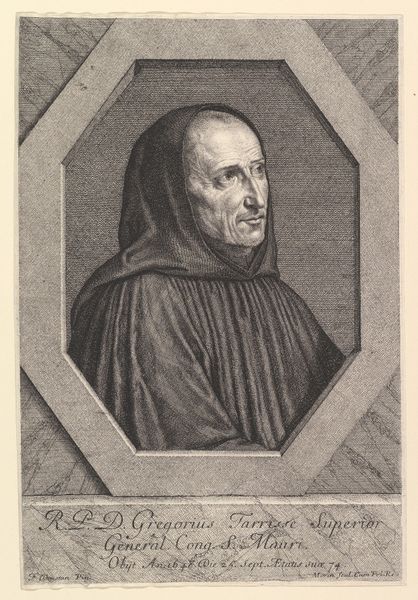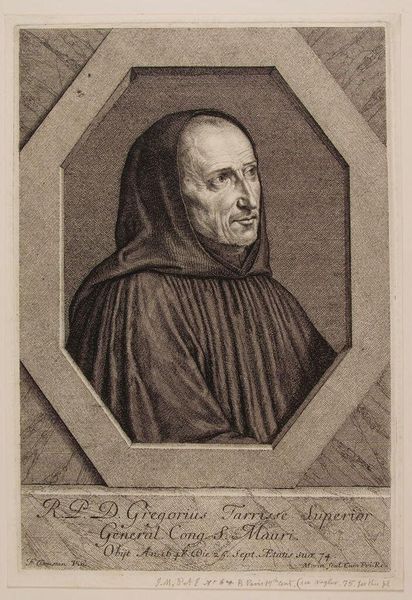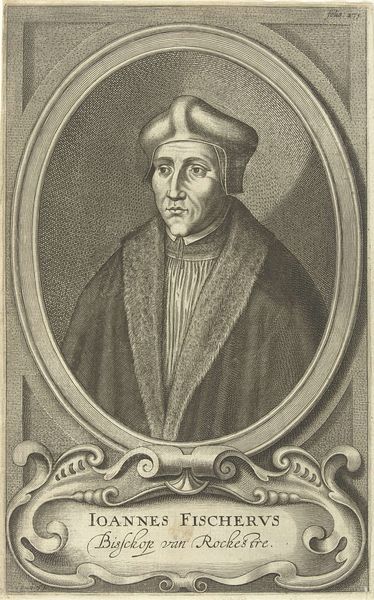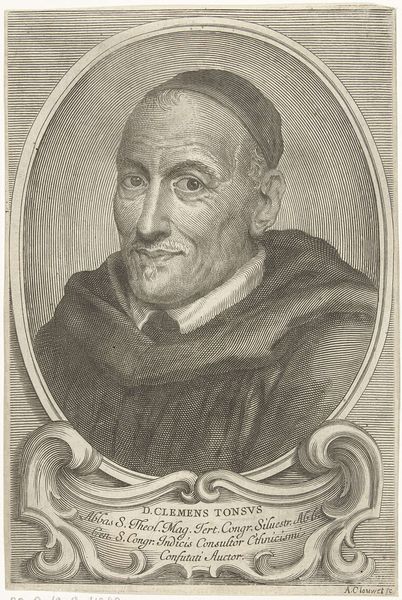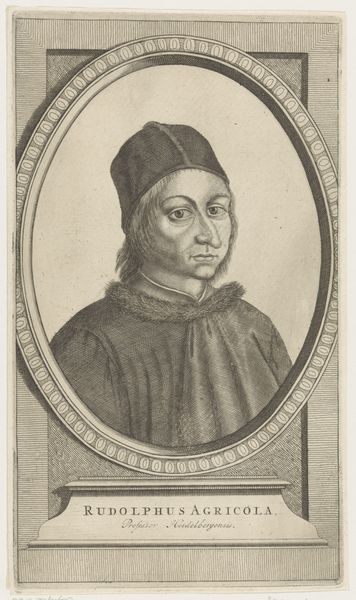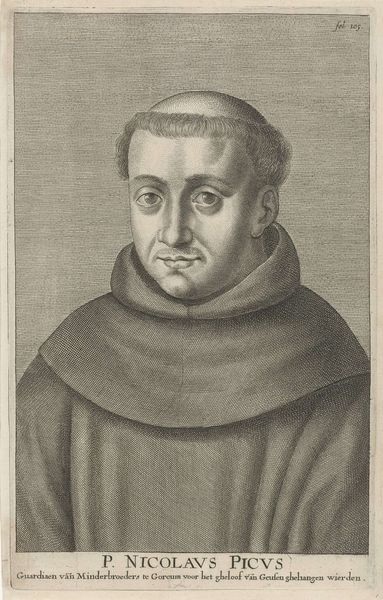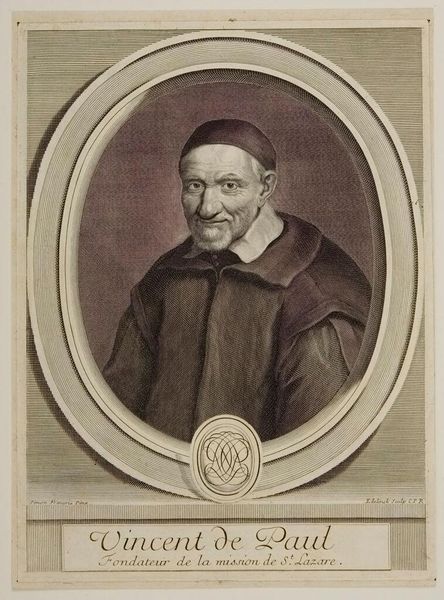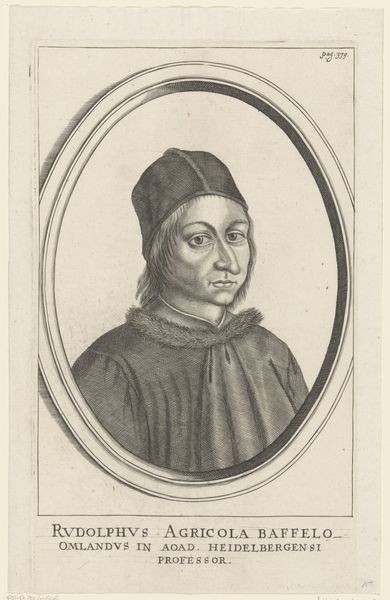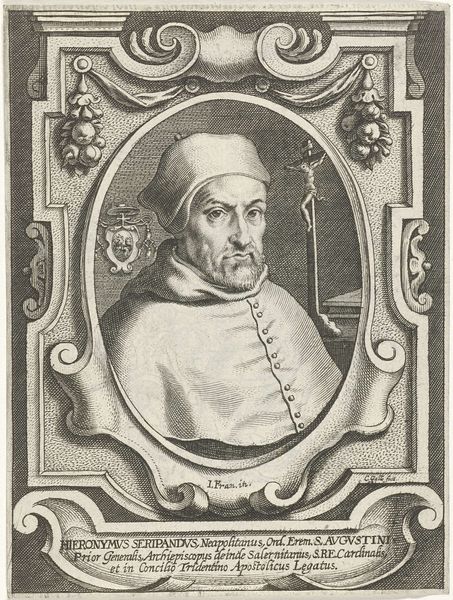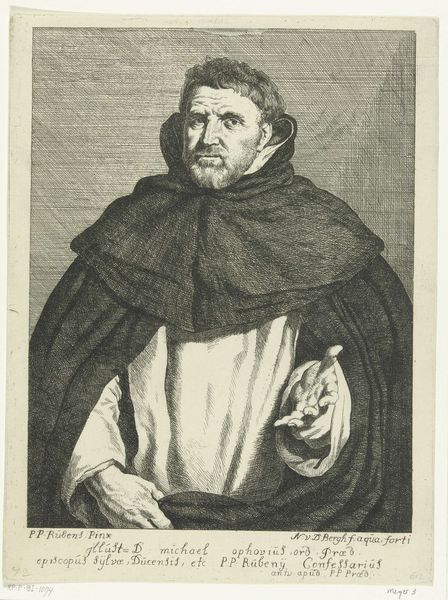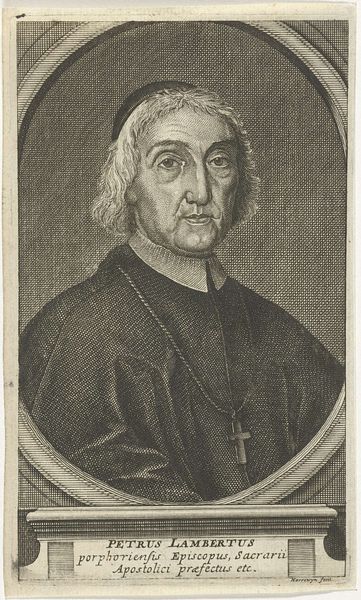
print, engraving
#
portrait
#
baroque
# print
#
portrait drawing
#
history-painting
#
engraving
Dimensions: height 276 mm, width 198 mm
Copyright: Rijks Museum: Open Domain
Curator: Looking at "Portret van Paus Adrianus VI," a print made circa 1653 by Frederick Bloemaert, I'm struck by the intricate detail captured through engraving. It resides here at the Rijksmuseum. Editor: My immediate response is a feeling of solemnity, almost melancholy. The monochrome palette and the Pope's downcast gaze really contribute to a subdued mood. The detail is stunning, but what do you find particularly compelling from a historical viewpoint? Curator: Bloemaert, though Dutch, situates the work firmly within the Roman Baroque. The oval frame and inscription around Adrian VI’s head act as architectural elements – devices often employed to bolster papal authority and prestige in portraiture during the Counter-Reformation. It aimed to visually reaffirm the Church's power in a time of crisis. Editor: It is interesting you mention "crisis." I see Adrian’s expression, along with that inscription - "In vita infelicitas quam diu vixi mih in infelix" - and can't help but connect this to how the portrait resonates with themes of isolation and even perhaps, a critique of institutional power? To our contemporary perspective, what did Bloemaert try to convey in relation to gender and its intersections within religious authority? Curator: It’s true that Adrian VI's papacy was short and marked by attempts at reform that met with resistance. That phrase encapsulates a life marked by unhappiness, and his attempts at moral reform went largely unsupported by Rome at the time. To suggest it serves as critique might stretch its original intent a bit, given Bloemaert's Catholic background. Remember that female roles within the Church are generally suppressed. The artwork's impact could lie in humanizing a powerful figure. Editor: Still, this makes me question the artist's and Bloemaert's place as well. How do you read Bloemaert's choice to focus on this particular image and to convey a somber expression in the portrayal of such an important figure in religious authority? Does it mirror sentiments shared within certain sectors of society? Curator: As you have mentioned, the historical climate certainly informed the tone of artistic creations like this portrait of Adrian VI. Perhaps his fleeting papacy became synonymous with good intentions stymied by political realities within the Church. Editor: Ultimately, it offers insight into an important and complex time.
Comments
No comments
Be the first to comment and join the conversation on the ultimate creative platform.
